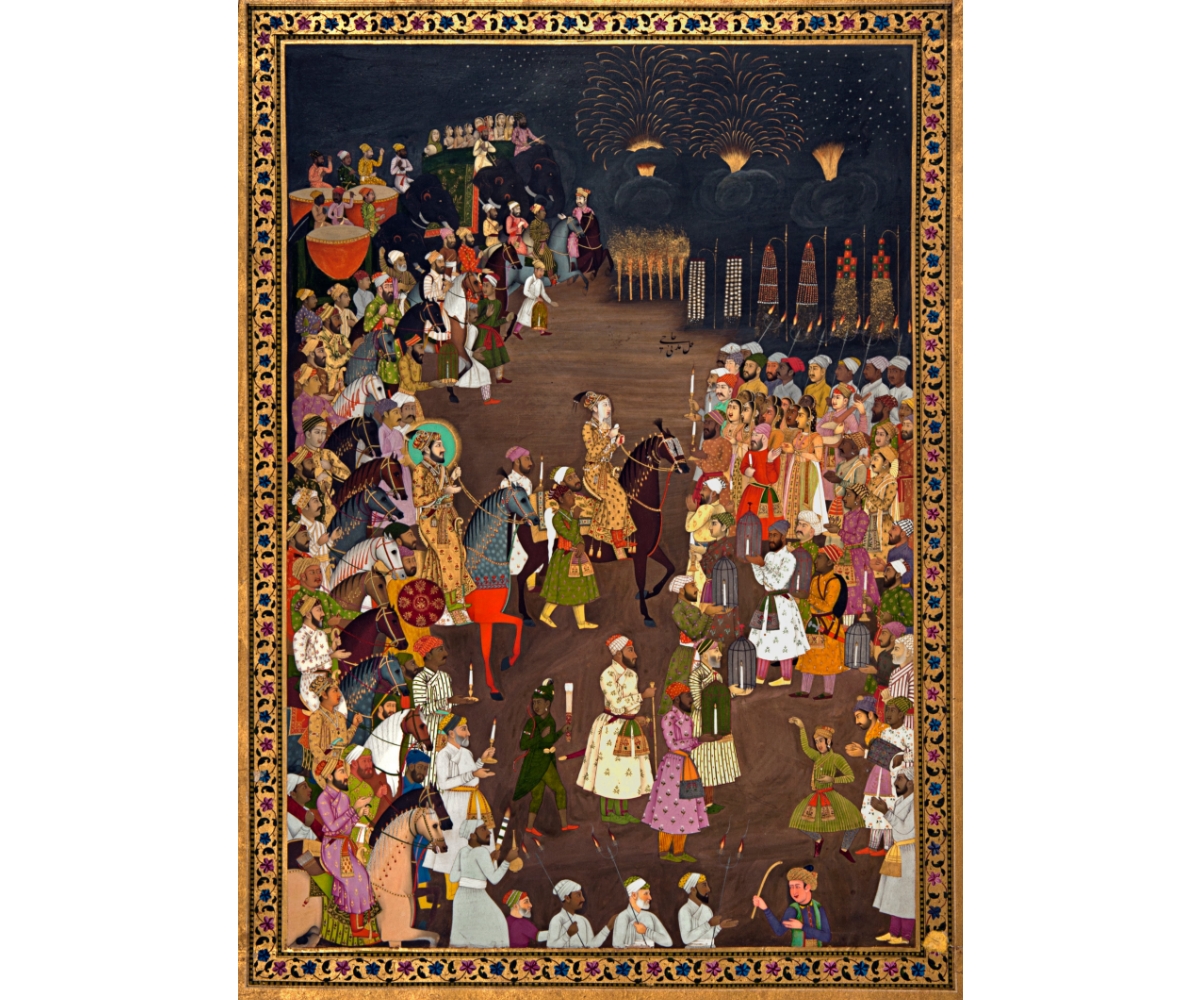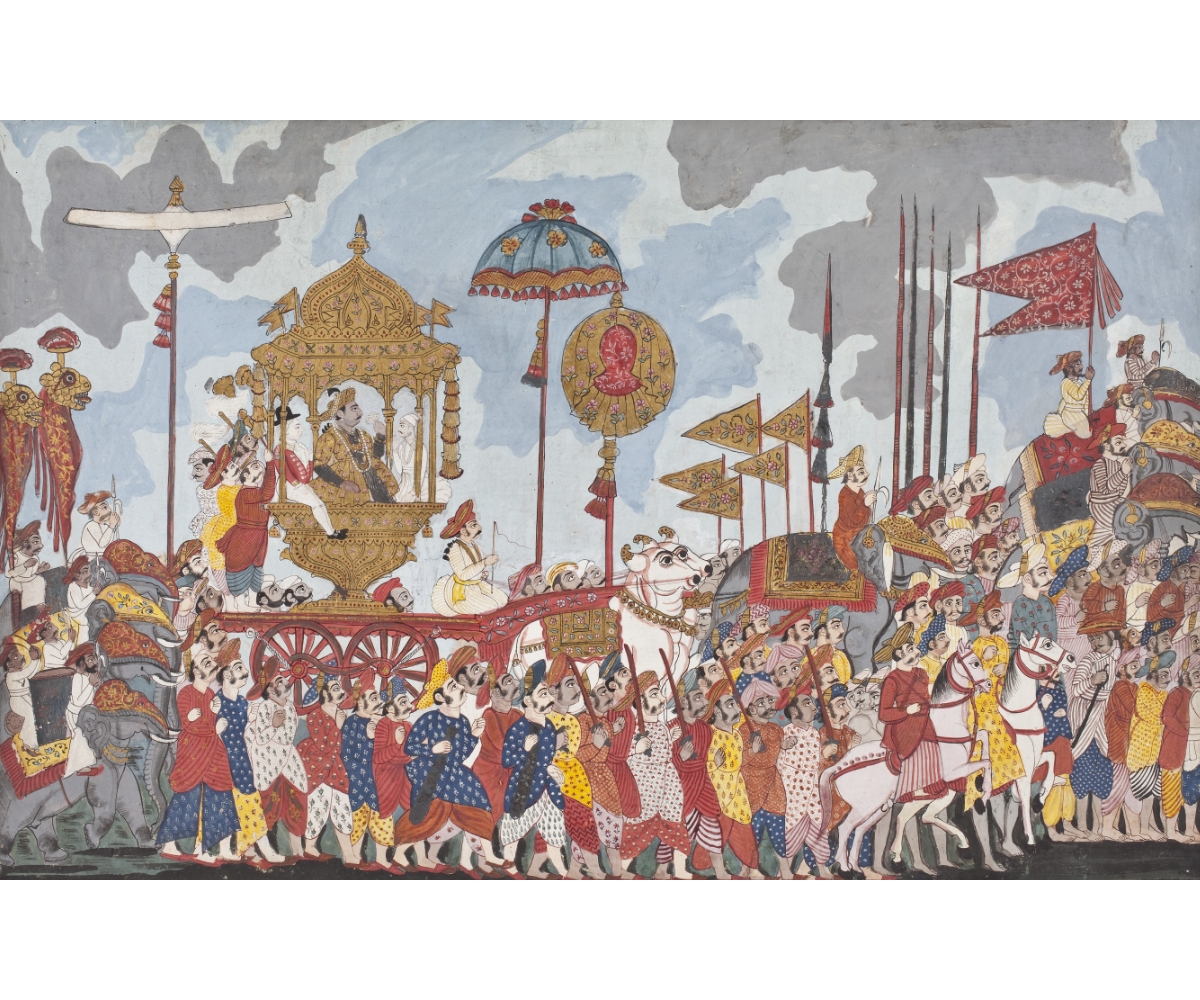PERSPECTIVES
Celebratory Processions: Art Historical Records and What They Tell Us
Celebratory processions are a familiar sight for most South Asians; they accompany religious, political and life events including festivals, pilgrimages, and weddings. Art from across the subcontinent reveals that for millenia, we have engaged in such extensive processions. These two paintings, from the 18th and 19th centuries depict rulers in processions — one a wedding procession and the other, a festival — and yet each image is a means through which we gain a glimpse of political circumstances.
The first painting from the 1740s depicts the wedding procession of Dara Shikoh, the eldest son of Mughal emperor Shah Jahan. Groups of performers dance and play musical instruments, fireworks illuminate the night sky and people hold lighted candles or fold their hands in obeisance. A haloed figure —the emperor — leads an array of horse-mounted noblemen as his son, wearing a veil of pearls, steps forward. The formal choice of Dara Shikoh’s position at the centre of the composition and his gold brocaded jama, similar to the one worn by his father, indicates his fate as the chosen successor. Here, a celebratory procession marking a joyous event is also a reassertion of the politics of succession and a commentary on the powerful emperor’s favour.
The second painting, made in the early-19th century, shows the Maharaja Serfoji II of Thanjavur in the midst of the Dussehra procession. The monarch is accompanied by an assembly of courtiers seated on lavishly-adorned elephants and horses, foot soldiers carrying weapons, embroidered royal banners and vibrant parasols. Serfoji II shares his lofty golden carriage with an English dignitary and an Indian official, reflecting the changing political landscape of contemporary colonial India. The presence of the British official signals the legitimacy of British presence in India, and conversely, the maharaja’s favour with the British.
Even today, South Asia is unique for the number, types and scale of its processions. Their enduring presence across time, space and cultures testifies to their importance as spectacular, sensory experiences bringing people together and as displays of religious, socio-economic and political powers at play. Celebrations without processions are a lacklustre affair and it is impossible for the onlooker to not get swept up in the fervour of the moment, and join in the ecstasy.






